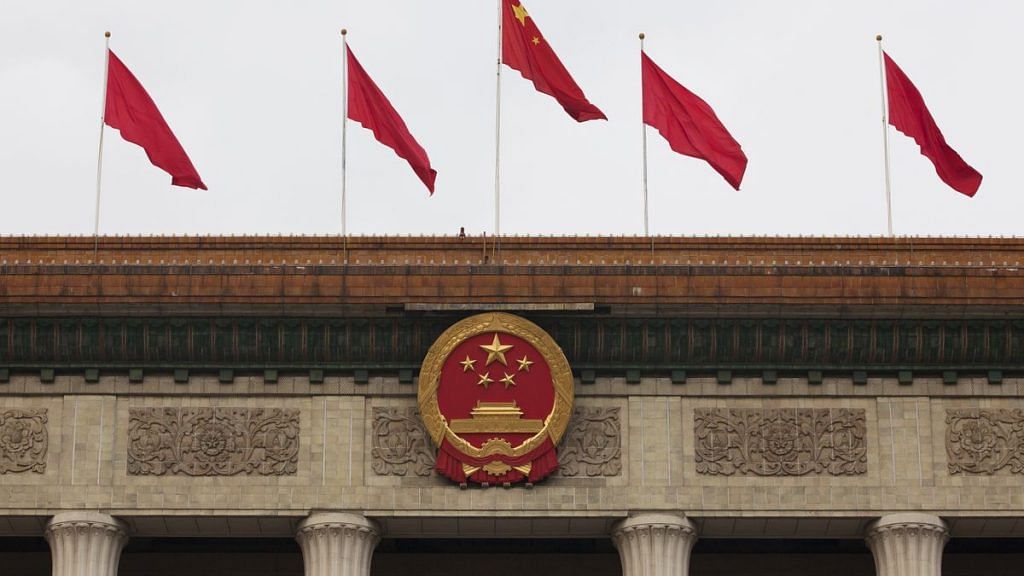New Delhi: China Wednesday released a white paper on its overall national defence strategy, emphasising the enhanced role of the military in safeguarding its overseas interests and international peace, while also taking potshots at the ‘Quad’ — the informal grouping of the US, Japan, Australia and India — without naming it.
The white paper, titled ‘China’s National Defence in the New Era’, also warns of a strong retaliation against attempts to break up China through an independent Taiwan.
It strongly defends its huge military budget of US$ 177.61 billion, and also expresses its keenness to maintain stability at the borders with India.
Potshots at the US and ‘Quad’
Detailing China’s plans to build a high-tech military, the 27,000-word white paper lambasts the US for “undermining the global strategic stability”.
The US wants to counter China’s growing muscle in the region by forming a bloc with India, Japan and Australia. Known as the ‘Quad’, the idea was floated by Japan in 2007, but India had refused to take part, fearing that Beijing would get angry. China had already expressed its displeasure about the Malabar naval exercise involving all four countries that year. However, India has now gradually changed its stance, and the four countries have begun informal talks.
Without naming the ‘Quad’, China says the US is strengthening its Asia-Pacific military alliances and reinforcing military deployment and intervention, adding complexity to regional security.
Interestingly, China continues to use the old phrase Asia-Pacific, while the US has now started referring to the region as Indo-Pacific.
“The world economic and strategic centre continues to shift towards the Asia-Pacific. The region has become a focus of major country competition, bringing uncertainties to regional security,” it says.
The document adds that Asia-Pacific countries are increasingly aware that they are members of a community with a shared destiny.
“Addressing differences and disputes through dialogue and consultation has become a preferred policy option for regional countries, making the region a stable part of the global landscape,” it states.
Also read: Long-range missiles, military pact and a tweet: South China Sea’s new strategic reality
Passing mentions of India
India is mentioned in the document 18 times, but only in passing.
On military restructuring, the paper says that India, along with the UK, France, Germany and Japan, is re-balancing and optimising the structure of military forces.
On China’s relationship with bordering countries, it says that Chinese armed forces strive to promote stability and security along the border with India, “and take effective measures to create favourable conditions for the peaceful resolution of the Donglang (Doklam) standoff”.
It adds that to implement the important consensus reached by the leaders of China and India, the two militaries have exchanged high-level visits and pushed for a hotline for border defence cooperation, and mechanisms for border management and border defence exchanges.
China’s military aims
China had released a white paper on defence in 2015, and about four months later, announced a major reorganisation of the People’s Liberation Army. That reorganisation— the most comprehensive since the Deng Xiaoping era — has now largely being implemented.
The new document says that resolutely safeguarding China’s sovereignty, security and development interests is the fundamental goal of China’s national defence in the new era. It adds that the South China Sea islands and Diaoyu islands are inalienable parts of Chinese territory, and China exercises its national sovereignty to build infrastructure and deploy necessary defensive capabilities on the islands and reefs in the South China Sea, and to conduct patrols in the waters of the Diaoyu islands in the East China Sea.
It also stresses that the PLA will resolutely defeat anyone attempting to separate Taiwan from China.
Some aims of the Chinese military that the document lists include:
– To deter and resist aggression.
– To safeguard national political security, the people’s security and social stability.
– To oppose and contain ‘Taiwan independence’.
– To crack down on proponents of separatist movements such as ‘Tibet independence’ and the creation of ‘East Turkistan’.
– To safeguard national sovereignty, unity, territorial integrity and security.
– To safeguard China’s maritime rights and interests.
Also read: China’s massive underwater blasts at Djibouti military base pose huge risk to environment
